-
Posts
1172 -
Joined
-
Last visited
-
Days Won
17
Content Type
Profiles
Forums
Blogs
Events
Gallery
Downloads
Store
Posts posted by 74_5.0L_Z
-
-
That would cause other asymmetries with the car's steering. I'll just have to suffer at the autocross events and find someone between 5'4" and 5'6" and between 115 and 120 ponds to sit in the passenger side to balance the car. Blondes or brunettes are fine, but redheads are preferred.

-
 1
1
-
-
I wouldn't try to center the engine, or try to get perfect balance. I would align the centerline of the engine with the centerline of the differential as seen from above. That way you will minimize the driveshaft angle.
-
Funny that you mention that. I was just pondering what it would take to shift the entire engine, transmission, transmission tunnel, steering column, pedals, and the big lump behind the wheel about 1.5" inches to the right. That way my new exhaust would still line up with the tunnel and the steering shaft would still fit inside my driver's side header. I think I'll put that on my to-do list for the next car that I build.
-
From the corner weights that I presented above, you can calculate the position of the CG as seen from above.
First, if you take moments about the centerline of the car and use my wheel base and track of 92 inches and 56.5 inches you get the following:
The sum of the moments about X = (1359lbf - 1278 lbf)(28.25 in) - (2632 lbf ) dy = 0
dy = (1359 lbf - 1278 lbf)(28.25 in) / (2632 lbf) = 0.92 in to the driver side.
Similarly, Moments about the rear axle yield the fore / aft position of the CG relative to the rear axle.
The sum of the moments about Y = (2632 lbf ) dx - (1278 lbf)(92 in) = 0
dx = (1278 lbf)(92 in) / (2632 lbf) = 44.67 inches ahead of rear wheels.
So, now you can go through the exercise of determining (roughly) how far I would have to move the engine, transmission and connected stuff toward the passenger side to balance the car such that the CG is centered left to right.
The Y position of a composite collection of rigidly connected parts is the sum of the y position of each of the separate parts times each parts mass divided by the total mass. In this case, if we set Ycg to zero we can find out how far the engine and transmission have to move if we assume that they weigh a combined 600 lbs.
0 = [(-0.92 in)(2632 lb) - (Yei)(600 lb) + (Yef)(600 lb)] / 2632 lb
where Yef is the final engine position and Yei is the initial engine position relative to the centerline.
Dy = (Yef - Yei) = (.92 in)(2632 lb) / 600 lb = 4 in
As much as I would like a perfectly balanced car (left to right), there is just no way that I am going to move the drivetrain four inches to the right.
-
Well, it's that time again. The car has been sitting for two years and I have made some significant changes that require redoing the corner weights.
Here is what I have done that changes things:
1. I have changed from Hoosier FA slicks to Hoosier 275/35/15 A6 tires on all four corners. The A6 tires are a couple of pounds heavier each.
2. I have upgraded my front brakes from 11.5 x 0.81 rotors to 11.5 x 1.25 rotors. Again these are a bit heavier.
3. I have completely redone my exhaust. I got rid of my block hugger headers and built a custom set of stainless headers and exhaust. Overall the exhaust is about 20 pounds lighter than it was. Here a link to the exhaust build:
http://forums.hybridz.org/topic/114643-my-custom-made-headers-and-exhaust-system/
4. The driver has gained about ten pounds.
5. I've lowered the fuel cell, moved it further forward, and moved it more to the right. This involved rebuilding the fuel cell support structure and redoing the bulkhead above the cell.
6. I raised the front end about 3/4" and dropped the rear spring rate from 450 to 425 lb/in.
So, here are the new numbers (after adjusting the diagonals):
Left Front: 658 Right Front: 620
Left Rear: 701 Right Rear: 653
So, my new total weight is 2632 lbs with me and a 6 gallons load of fuel in the car.
The front / rear weight distribution is 48.6 / 51.4 and the left /right distribution is 51.6/48.4.
-
If I remember correctly, the bolts that hold the original belts to the car are SAE thread (This was required on import cars at the time). I'd have to look but I think they are 7/16"-20. So, if you are planning to install the eyebolts in the original attach points for the seat belts then buy SAE (not metric) eyebolts.
-
Can you post your dyno charts so that we can compare the area under the curve and not just the peak numbers?
-
My door bars attach to a hoop forward of the firewall. Its kind of similar to the way some roadster cages are made. When I built my chassis the car was still being driven regularly on the street. I didn't want halo bars to rattle my brain. For a purpose built track car, a full cage is the best solution.
-
Here you go. I'm sorry there so dark, but I stink with a camera and the car is dirty from sitting these past two years. The second picture shows where the door bars penetrate the firewall to attach to the front. You could probably weld a plate in that corner to attach the door bars to if you didn't want to penetrate the firewall or if you don't want a front hoop.
-
Here are some pictures from my chassis construction in 2003:
The chassis is very stiff. I can jack up the car under the front sway bar attach point and get three of the four tires off the ground and still open and close the doors.
The X across the doors is low enough that I can roll the windows down (the factory crank just rubs the bar as it passes). I did have to delete the 260Z armrest though.
-
Let's see some pictures of your ducting (both the inlet and outlet sides).
I'm in the process of upgrading my font brakes (again). I've been running the Stage II brakes that Mike Gibson used to sell (11.5 x 0.81 rotor, Outlaw 2800 calipers), but now I want to change from running autocross to running track day events. So, I am upgrading to 11.5 x 1.25 directional vane rotors and adding cooling ducts.
-
I haven't used the Tokicos, but if they are gas pressurized like the old KYBs then they provide a significant force to extend the strut. Konis are not gas charged and provide no force unless the shaft is in motion. Preloading the spring will restore the ride height.
I'm guessing that the rear of your car has about 650 lbs of sprung weight on each of the rear tires. So, if you install the springs without a preload the spring will compress about 2.9 inches. If you preload the spring by 1 inch then you will only compress the spring an additional 1.9 inches when you put the car on the ground and you will have that much rebound travel available
Definitely get some thrust bearings to put between the spring and lower perch. I used to preload my old 250 lb springs. Before installing the thrust bearing, it was a herculean task with all of the weight off the tire. After installing the thrust bearings, I can adjust the ride height by hand while the car is on the ground.
I got my thrust bearings from Speedway Motors.
I was going to paste the URL, but the editor is not allowing copy/paste.
-
How much did you shorten the rear strut housing? You aren't at the limit of your strut travel (in rebound), are you?
What is your spring rate and free length?
If you do not have variable rate springs then your spring rate should be almost constant over the usable range of spring travel.
-
Great stuff. However, we need pictures.
I'd be willing to bet that most of the flex is happening ahead of the firewall. It would be great if you could get intermediate measurements at the front of the rocker panels.
Keep up the good work.
-
-
Offsetting the engine toward the passenger side (right) is desirable to help balance the car left to right, to reduce driveshaft angle, and to get better clearance between the exhaust and the steering shaft.
-
Blue Streak used to make high quality caps and rotors with brass contacts. I haven't bought any in a while. Hopefully they are still available and still of high quality.
-
I have way too much time in the headers. There are a few reason that it took so long. First, this was the first time I have made a set of headers.
Second, stainless steel is expensive, and I wanted to get every cut perfect the first time. Lastly and most importantly, I was trying to finish my Masters Degree in Mechanical Engineering. So, time to work on the car was in short supply.
The program that I wrote to calculate the bends actually began as a project for my Robotics class. I convinced the professor that the procedure to calculate the bends for a header was the same as that required to solve the kinematics of a robot arm with seven degrees of freedom (which it is). So, I spent a semester doing the math and writing the code to figure the header tube paths.
I finished that class in 2011, but had several classes to finish for my degree so the headers went on hold while I collected parts and finished school. I finished my degree in April 2013 and finished the headers in August.
-
OK, I went back and tried to reconstruct what the error was with the 260Z FSM frame drawing, and I believe that I have found the error. I am posting the 260Z FSM drawing below so that I can point out the error.
The dimension between the TC mount and Point B is too short on the 260Z drawing. The listed value is 11.3 inches.
If you look at the frame drawing posted by NewZed, that drawing shows the dimension as 12.88. That number is correct. Unfortunately, that dimension is to the engine mount on the crossmember. You can however measure the crossmember and calculate the additional distance you will need to the frame mounting holes.
I hope this helps.
-
I think the sway bar mounting holes would be the easiest and most reliable reference point. When I made my frame rails, I used the dimension of the sway bar mounting holes that were published in the FSM and had no problem. I did have issues with the published fore/aft position of the TC mount and the position of "Point B."
-
Well I pulled the passenger side strut back out to determine why I still had play and why the torque leveled off around 200 ft-lb. So, I loosened the nut and started to re-torque it. Again as I reached 200 ft-lb, the torque went soft. Well, I turned it a little more and then the torque completely went away. All of the threads on the axle let loose. Now I had a nut on the axle with no threads by which to remove. Several hours later the nut is off, and I am in need of a new axle and nut.
-
TieFighter,
I just noticed that you are only about 45 minutes from me. If you want, you can come over and take some measurements after the Thanksgiving holiday.
Do you plan to autocross when complete? The season starts in January.
-
When I built my front frame rails about ten years ago, I went by the 260Z frame drawing for placement of the TC buckets and the crossmember placement. After welding everything up, I discovered that the 260Z FSM had some significant errors. I believe that these errors were corrected in the 280Z FSM but I am not sure.
If it were me, I would clamp the crossmember in place and assembly the suspension to make sure everything is correct. You may even want to move the crossmember slightly forward of the stock location to gain a little caster. If you do, make sure that the wheels clear the fenders and air dam. Also if you go too far forward, the steering shaft will not reach.
-
I should only be recording 3 decimal places (my bad). I interpolated on the spacer dimension.
To measure the housing, I install the inner bearing and then use my Starrett dial calipers to measure from the lip of the outer bearing to the face of the inner bearing. I use it like a depth gage by resting the bottom of the caliper on the ledge of the outer race and let the bar extend hit the face as I open the caliper. I repeated the measurement several times at different clocking around the bore until I was satisfied that I had a reasonably accurate measurement that could be repeated.
Thanks John,
I will have to get some of that Loctite Bearing lock and see if I can extend the life of the strut housing until I can get a replacement and get it sectioned. I assume that this is the stuff that you mean:

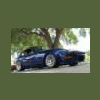

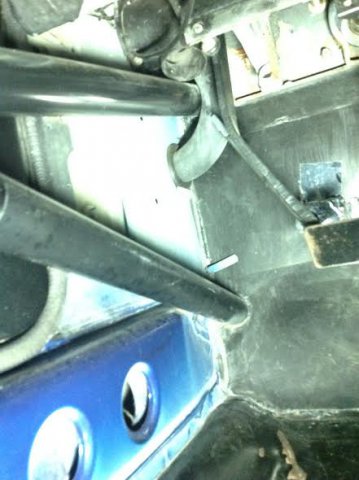
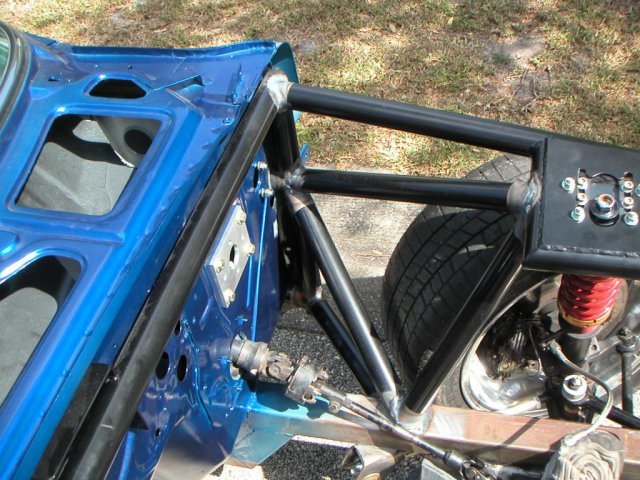
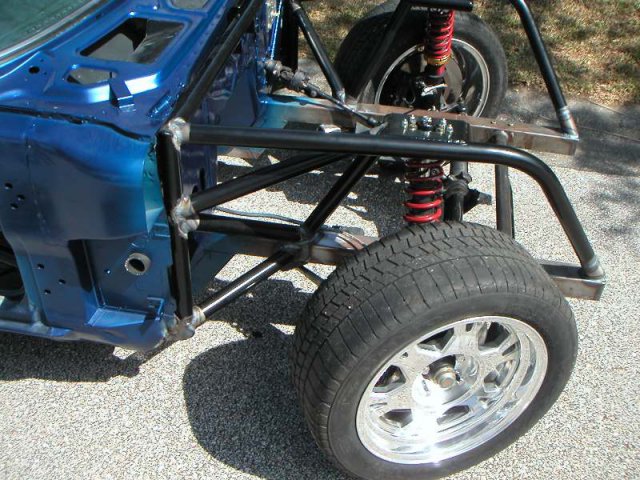
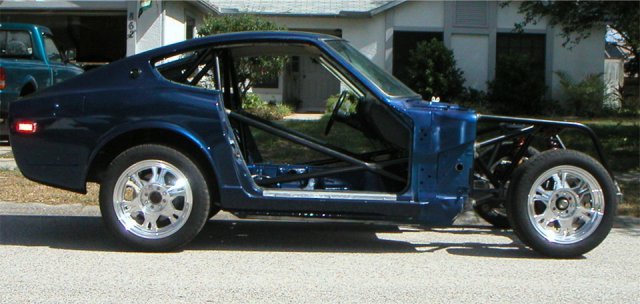
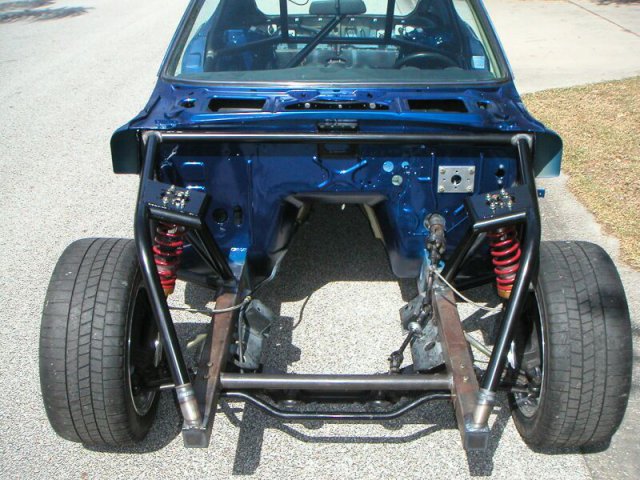
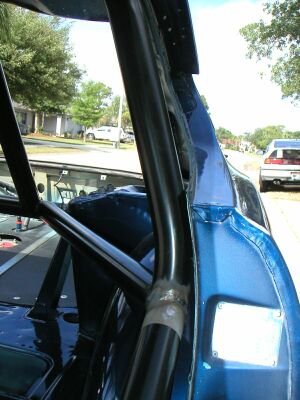
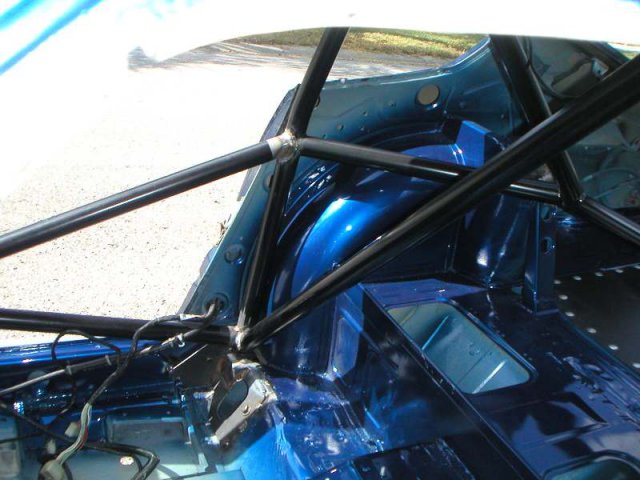

Chassis Setup (corner weights)
in Brakes, Wheels, Suspension and Chassis
Posted · Edited by 74_5.0L_Z
Well, just got back from a weekend at Sebring running autocross with the Central Florida SCCA. It was great to get some seat time as this was the first time I have had the car out in over two and a half years. The car has been sitting while I finished my Masters degree and while I weathered the storm of lay-offs in the space industry. Now that I am fairly comfortable that I am not going to lose my job in the near future, I feel a little more responsible spending money on race tires.
As far as corner balancing goes, I consider it a necessity. I would no more mount a new set of Hoosiers and go racing without a corner balance than I would go racing without a proper alignment. I want to make the most out of my tires and make them last as long as possible.
As you guys stated above, that Camaro is cool. But he will get his rear-end handed to him by the 1800 pound beasts that dominate this class. I spent the whole weekend racing Brunton Stalkers. Those little things are hard to beat. Scott Minehart (the owner of the Brunton Stalker company and a national level driver) was there with his new Stalker M-Spec. Basically it is a Lotus 7 clone with a LS1 engine.